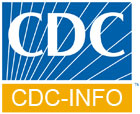Skip directly to the search box, site navigation, or content.
Division of Foodborne, Bacterial and Mycotic Diseases (DFBMD)
Blastomycosis
Frequently Asked Questions
- What is blastomycosis?
- Who gets blastomycosis?
- How is blastomycosis spread?
- What are the symptoms of a blastomycosis?
- How soon do symptoms appear?
- If I have symptoms, should I see my doctor?
- How is blastomycosis diagnosed?
- How is blastomycosis treated?
- How can blastomycosis be prevented?
- Have there been any recent outbreaks?
Blastomycosis is disease caused by a fungus, Blastomyces dermatitidis, which is found in parts of the south-central, south-eastern and mid-western United States. Microfoci are also found in Central and South America and parts of Africa. The fungus can be found in moist soil enriched with decomposing organic debris.
Persons in areas with endemic disease with exposures to wooded sites (e.g., farmers, forestry workers, hunters, and campers).
The infection is spread by inhalation of airborne conidia (spores) after disturbance of contaminated soil. Blastomycosis is not known to be transmitted from person to person.
What are the symptoms of a blastomycosis?
Symptomatic infection (50% of cases) usually presents as a flu-like illness with fever, chills, productive cough, myalgia, arthralgia and pleuritic chest pain. Some patients fail to recover and develop chronic pulmonary infection or widespread disseminated infection (affecting the skin, bones and genitourinary tract in particular). Blastomycosis can also occasionally affect the central nervous system, resulting in meningitis.
Symptoms may appear between 3 and 15 weeks after exposure.
If I have symptoms, should I see my doctor?
Yes. Blastomycosis requires treatment with antifungal drugs that must be prescribed by your doctor. Untreated infection can lead to complications and death.
How is blastomycosis diagnosed?
The diagnosis is usually made by obtaining a body fluid specimen or biopsy of affected tissue and looking for the characteristic fungal forms in tissue under a microscope. A culture of body fluids or tissue from an affected site may also be performed. Blood tests to detect antibodies to the fungus can be done, but are not very accurate. An antigen test, performed on a urine sample or serum sample, is also available.
For persons with mild or moderately severe disease, itraconazole may be used for treatment. For persons who are seriously ill, who have central nervous system infection, and/or who are immunocompromised, treatment should be initiated with amphotericin B. Newer triazole antifungal drugs such as voriconazole and posaconazole appear to have activity against the fungus, but their role in treating blastomycosis has not yet been determined.
How can blastomycosis be prevented?
In endemic regions, it may not be possible to completely avoid exposure to the fungus. However, those who are immunocompromised may consider avoiding wooded areas where the fungus is prevalent.
Have there been any recent outbreaks?
Lincoln County, Wisconsin, a hyperendemic region, had an outbreak from January to April 2006. There were 27 confirmed cases compared to the typical 8 cases per year, which was the largest to occur in a non-rural setting. An outbreak investigation suggested that a pine needle pile, which had been relocated served as the common point source of exposure. There were also environmental and weather conditions deemed favorable for the growth of blastomycosis.
Content Source: National Center for Zoonotic, Vector-Borne, and Enteric Diseases (ZVED)
Program Contents
Contact Information

